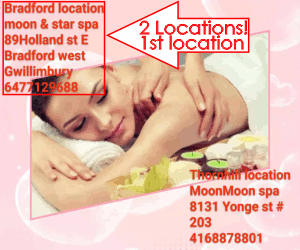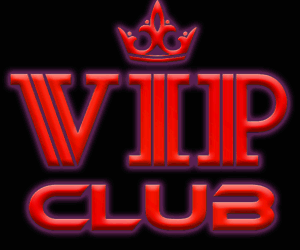M
M.O.E.
Guest
On a spring afternoon in the middle of winter, the sun, in its retreat, bathes the pines of Santa Gertrudis in gold as the last gift of the day. I am on my way to meet Sophie Costes (Paris, 1974), psychocorporal and ayurvedic therapist, and also founder of the Waterness Journey™. I have always thought that Social Security falls short when it comes to including alternative therapies that are much needed, but of course, maybe it is not interested. I think in general most of us have been raised not to listen to our bodies and give them what they ask for straight up. Let’s dive into the world of aquatic therapy, among others, to learn about the options offered by this therapist dedicated to bringing out the intrinsic power of bodies.
-How does your story begin?
-I was born in Paris. I grew up in Paris and in Switzerland, on the French side, I studied Fine Arts and fortunately I started working in a contemporary art gallery where I spent several years with international artists… very exciting. But suddenly I left everything to move to Barcelona and start a new life after discovering that I had a body and my desire to inhabit it. So I started studying yoga, then I continued Ayurveda and while, at the same time, I was working for two years at the Picasso Museum in Malaga. I was torn between art and the body. I was working on the birth of the museum, a very nice project. When I finished, I went to India to learn Vipassana or silent retreats and I ended up living in India for 10 years learning all kinds of things. I ended up in Goa working with Ayurvedic massages and discovered water work. So since 2007 I consider myself a therapist and have been doing these things ever since.
Before and during the confinement I have also studied Integrative Body Therapy at the T.C.I. school in Barcelona which provides a lot of understanding from the approach of biodynamics, bioenergy and Gestalt among others to accompany others on the journey of self-knowledge. This has not only done me a lot of good as a therapist but has also been very important for my own inner journey.
There are many massage therapists and in water as well, but I think it is very important for those who want to be trained in this, knowing that the bodies keep all human experiences and that by touching them we can access very deep places, if we do not have the necessary tools to accompany and support the person, perhaps we can re-traumatize. This is very important, and as a teacher and therapist I recommend this study in Integrative Body Therapy or Gestalt called “Circle of Consciousness” which is led by therapists and professionals with a lot of heart.
-How did you end up in Ibiza?
-I have always had a connection with the island, at first because of the party when I was young but then in 2013 working for 6 years in Goa with Roger White who decided to leave his pool there and move to Ibiza for a new project, and he asked me if I wanted to come and I said yes. Since 2013, I am stable on the island doing pool sessions and water treatments.
-The human being is 70% water, the most logical thing would be that we would be more connected to therapies that involve immersing ourselves in the same element to which we belong, I may be ignorant but I think that very little is done with this.
-There are more than you think, and it is expanding especially in spas and hotels. More and more people are becoming aware of these types of therapies. And more access too. Think that water therapies were invented in the eighties, so there is already a path. And there are countries that due to the temperature of the sea have more activity in the water because they don’t need a heated pool. Mexico is an example of this.
-What are Waterness Journey sessions?™ of aquatic therapies that you offer?
-It starts with a dialogue with the person concerned to understand what are the motivations, their relationship with water… there are people who come with a phobia of water, others who come just for the welfare of the experience, others are interested in the movement in suspension… The initial talk is to give me a general idea, then floating on the surface I do some massages to open the body and then if you want we do also submerged. The interesting thing about aquatic therapies by subtracting gravity is that it allows the body to express itself freely, in a pre-cognitive way, generating a somatic release. I mean, charged emotions in the system that come out with the movement and it frees you from tensions changing your life because once we unlock that, the energy of the body circulates freely again enhancing the power of the body.

Sophie with a man in aquatic suspension.
-I say that we all have a little box in our chest where we put our earrings, those words we should have said but didn’t say, that cry we should have let out but we repressed and that are stored there and that stop us….
-And also sometimes just the fact of enjoying, or being in a very sensual relationship with oneself in that warm water at almost body temperature, with your eyes closed and your ears under the water, in a primary state because we are all aquatic beings… oceanic… and when we are gestated we float in warm amniotic fluid where there are sensations and perceptions, and this therapy reconnects you with that.
-There is a therapy that is becoming fashionable in the U.S. that consists of floating in a capsule of hot, salty water in the dark for sensory isolation, which they say is not easy and is not for everyone….
–Well, everyone is different, one can give fear and another pleasure. Everyone has their own experience with who they are. For me, for example, being locked in a capsule does not seem very pleasant to me, but I still do it and I like it.
-Yes, of course, another person may like the confinement because it reminds him of his mother’s womb when he was a fetus… I mean, because of the containment.
The subjectivity of each person, but for me, more than being in my mother’s womb, I imagine it as being dead in the drawer [risas].
Each one of us has a filter towards life and the interesting thing is to find that resonance of the word that for you means one thing and for another, another, but to find the essence of the person and from there work the emotions. It is important that there is never judgment, because in a therapeutic context everything can be. Within a healthy therapeutic environment it is fundamental for people to be able to come knowing that they will be accepted.
-Of course, and important for the opening, if, by coming to you, they demonstrate a willingness to surrender, but if they don’t surrender to the process, it leaves you as the therapist with your hands tied.
-You work with what you have. If that body does not surrender at that moment, I am not the one to force it. If it looks like a piece of wood floating in the water, then that is its reality. The question is why it is in that state, but if it has not told me, I am not going to force for a matter of respect, and in that space, allow the person to move forward because it ends up relaxing.
I often have people come in for 3 to 6 sessions. I recommend, if it is possible for time and money for the person, to do at least 3 sessions. It is a good time to build that trust, to be able to process and close what is needed. Others come to a session for the enjoyment of the session only.

A woman in a state of relaxation
-How long does the session last?
-Thirty minutes of talk and an hour in the water.
-Do you deliver babies?
-No, but I give pregnancy accompaniment, I am a teacher and I collaborate with an institute in Madrid called WATSUPATH, the first Watsu® training institute in the world specialized in the therapeutic field, managed by health professionals.who is dedicated to aquatic therapies. One of my courses is dedicated to pregnancy support.
-They say that giving birth in water is much better for both mother and baby than traditional childbirth.
Well, I tried giving birth in water and I was so comfortable that in the end hours went by and I didn’t give birth [carcajadas]. I do not work during labor but before, I prepare the mother psychologically and physically for the opening through relaxation techniques. Accompanying and supporting. Being pregnant is not always a bed of roses, there are times when there are physical and/or emotional complications and the important thing is to give security to the mother from within.
-What do Ayurvedic massages consist of and what are their effects?
Well, for example, if I am with a man like you, small and loose [carcajadas porque si hay algo que no soy es pequeñito mi flojo] I will try a massage deep enough to generate openness and to encourage a new energetic circulation. I can use my hands or my feet. Ayurveda works with essential oils and, depending on how the body feels, with more or less pressure. But basically it is nourishing the body to maintain balance, using different oils that are used depending on the weather, the season and the emotional state of the person. It is also important to say that the joints are treated a lot through the heat of the rubbing.

Sophie using her weight for a massage by sliding her feet.
-What is the difference for the therapist and the person being massaged between hand massages and foot massages?
-It’s basically allowing my body weight to come down onto the body of the person being massaged. I have a rope hanging from the ceiling or I use canes when I go home and I can’t hang the rope I use to give me extra balance when doing the massage. I have one leg on the floor and with the other I slide it, and it is deeper than with my hands. It’s like a dance that covers the whole body with one step. It’s amazing, and people love it. It is a typical massage from Kerala in India where there is an art between dance and a very well known martial art, the Kalaripayatt, where warriors who jump super high in space and go with masks or face painted with a knife called kris. They give themselves these massages to make themselves more flexible before the ceremonies they do. I learned it from a woman, from a Kalaripayatt master in 2004. And I also teach it.

A balance support rope is used to ensure the precision of the movement.
-How do you explain to people how important it is to have a body that is decontracted, that flows, that is connected between the body, soul and mind planes, etc? Because this is not taught in the educational mainstream, they never talk about the power of breathing, how harmful it is to breathe through the mouth and the importance of balance.
-The answer to that question is very broad, but I would say that in the allopathic capitalist vision, when there is a failure in the body, we go directly to the problem and not to the origin of the problem. There is no holistic vision where it implies that each part of the body is linked to the rest, that we are a set of disposable matter but that we are also energy and emotions, spirit and that you have to know yourself to maintain balance. And each one of us is a world in itself, we are made of different proportions and experiences, and your nervous system will not react the same way as mine, etc. Balance comes from understanding how our body works. But in this society in which we live, we do not project the image of ourselves by taking the necessary time for self-knowledge.
I instill this in my 9 year old a lot, and when he is stressed or anxious I tell him to breathe for a few minutes to self-regulate, etc, and I think this generation could learn from young people this but mine and yours were brought up that the body is a thing to get from point A to B.
-And how do you see the panorama right now, I’m talking about the damage that social networks are doing to young people, where they lead them to such a frivolous plane where the body seems to serve only as bait?
-It is like a strategy to teach to dissociate the body from the soul. I think it is too late to ask how to avoid screens, the important thing for me, as a mother, is to be aware of the consequences of the abuse of technology and, therefore, to have limits. And the other thing is to increase the relationship with nature, this is fundamental. We have to encourage children to sweat in the field running, to touch the earth and get dirty, to play outside.
-And real, physical, interpersonal contact, too, right?
-Yes, absolutely.
-But are you optimistic or pessimistic about the future?
-That’s a good question… I think I’m more optimistic because I see the changes in me, and if I can change I think everyone can too. But let’s say, to be honest, I’m optimistic with some dips into pessimism. [risas].
More information at www.sophiecostes.com
[todas las fotos fueron suministradas por la entrevistada]
-How does your story begin?
-I was born in Paris. I grew up in Paris and in Switzerland, on the French side, I studied Fine Arts and fortunately I started working in a contemporary art gallery where I spent several years with international artists… very exciting. But suddenly I left everything to move to Barcelona and start a new life after discovering that I had a body and my desire to inhabit it. So I started studying yoga, then I continued Ayurveda and while, at the same time, I was working for two years at the Picasso Museum in Malaga. I was torn between art and the body. I was working on the birth of the museum, a very nice project. When I finished, I went to India to learn Vipassana or silent retreats and I ended up living in India for 10 years learning all kinds of things. I ended up in Goa working with Ayurvedic massages and discovered water work. So since 2007 I consider myself a therapist and have been doing these things ever since.
Before and during the confinement I have also studied Integrative Body Therapy at the T.C.I. school in Barcelona which provides a lot of understanding from the approach of biodynamics, bioenergy and Gestalt among others to accompany others on the journey of self-knowledge. This has not only done me a lot of good as a therapist but has also been very important for my own inner journey.
There are many massage therapists and in water as well, but I think it is very important for those who want to be trained in this, knowing that the bodies keep all human experiences and that by touching them we can access very deep places, if we do not have the necessary tools to accompany and support the person, perhaps we can re-traumatize. This is very important, and as a teacher and therapist I recommend this study in Integrative Body Therapy or Gestalt called “Circle of Consciousness” which is led by therapists and professionals with a lot of heart.
-How did you end up in Ibiza?
-I have always had a connection with the island, at first because of the party when I was young but then in 2013 working for 6 years in Goa with Roger White who decided to leave his pool there and move to Ibiza for a new project, and he asked me if I wanted to come and I said yes. Since 2013, I am stable on the island doing pool sessions and water treatments.
-The human being is 70% water, the most logical thing would be that we would be more connected to therapies that involve immersing ourselves in the same element to which we belong, I may be ignorant but I think that very little is done with this.
-There are more than you think, and it is expanding especially in spas and hotels. More and more people are becoming aware of these types of therapies. And more access too. Think that water therapies were invented in the eighties, so there is already a path. And there are countries that due to the temperature of the sea have more activity in the water because they don’t need a heated pool. Mexico is an example of this.
-What are Waterness Journey sessions?™ of aquatic therapies that you offer?
-It starts with a dialogue with the person concerned to understand what are the motivations, their relationship with water… there are people who come with a phobia of water, others who come just for the welfare of the experience, others are interested in the movement in suspension… The initial talk is to give me a general idea, then floating on the surface I do some massages to open the body and then if you want we do also submerged. The interesting thing about aquatic therapies by subtracting gravity is that it allows the body to express itself freely, in a pre-cognitive way, generating a somatic release. I mean, charged emotions in the system that come out with the movement and it frees you from tensions changing your life because once we unlock that, the energy of the body circulates freely again enhancing the power of the body.

Sophie with a man in aquatic suspension.
-I say that we all have a little box in our chest where we put our earrings, those words we should have said but didn’t say, that cry we should have let out but we repressed and that are stored there and that stop us….
-And also sometimes just the fact of enjoying, or being in a very sensual relationship with oneself in that warm water at almost body temperature, with your eyes closed and your ears under the water, in a primary state because we are all aquatic beings… oceanic… and when we are gestated we float in warm amniotic fluid where there are sensations and perceptions, and this therapy reconnects you with that.
-There is a therapy that is becoming fashionable in the U.S. that consists of floating in a capsule of hot, salty water in the dark for sensory isolation, which they say is not easy and is not for everyone….
–Well, everyone is different, one can give fear and another pleasure. Everyone has their own experience with who they are. For me, for example, being locked in a capsule does not seem very pleasant to me, but I still do it and I like it.
-Yes, of course, another person may like the confinement because it reminds him of his mother’s womb when he was a fetus… I mean, because of the containment.
The subjectivity of each person, but for me, more than being in my mother’s womb, I imagine it as being dead in the drawer [risas].
Each one of us has a filter towards life and the interesting thing is to find that resonance of the word that for you means one thing and for another, another, but to find the essence of the person and from there work the emotions. It is important that there is never judgment, because in a therapeutic context everything can be. Within a healthy therapeutic environment it is fundamental for people to be able to come knowing that they will be accepted.
-Of course, and important for the opening, if, by coming to you, they demonstrate a willingness to surrender, but if they don’t surrender to the process, it leaves you as the therapist with your hands tied.
-You work with what you have. If that body does not surrender at that moment, I am not the one to force it. If it looks like a piece of wood floating in the water, then that is its reality. The question is why it is in that state, but if it has not told me, I am not going to force for a matter of respect, and in that space, allow the person to move forward because it ends up relaxing.
I often have people come in for 3 to 6 sessions. I recommend, if it is possible for time and money for the person, to do at least 3 sessions. It is a good time to build that trust, to be able to process and close what is needed. Others come to a session for the enjoyment of the session only.

A woman in a state of relaxation
-How long does the session last?
-Thirty minutes of talk and an hour in the water.
-Do you deliver babies?
-No, but I give pregnancy accompaniment, I am a teacher and I collaborate with an institute in Madrid called WATSUPATH, the first Watsu® training institute in the world specialized in the therapeutic field, managed by health professionals.who is dedicated to aquatic therapies. One of my courses is dedicated to pregnancy support.
-They say that giving birth in water is much better for both mother and baby than traditional childbirth.
Well, I tried giving birth in water and I was so comfortable that in the end hours went by and I didn’t give birth [carcajadas]. I do not work during labor but before, I prepare the mother psychologically and physically for the opening through relaxation techniques. Accompanying and supporting. Being pregnant is not always a bed of roses, there are times when there are physical and/or emotional complications and the important thing is to give security to the mother from within.
-What do Ayurvedic massages consist of and what are their effects?
Well, for example, if I am with a man like you, small and loose [carcajadas porque si hay algo que no soy es pequeñito mi flojo] I will try a massage deep enough to generate openness and to encourage a new energetic circulation. I can use my hands or my feet. Ayurveda works with essential oils and, depending on how the body feels, with more or less pressure. But basically it is nourishing the body to maintain balance, using different oils that are used depending on the weather, the season and the emotional state of the person. It is also important to say that the joints are treated a lot through the heat of the rubbing.

Sophie using her weight for a massage by sliding her feet.
-What is the difference for the therapist and the person being massaged between hand massages and foot massages?
-It’s basically allowing my body weight to come down onto the body of the person being massaged. I have a rope hanging from the ceiling or I use canes when I go home and I can’t hang the rope I use to give me extra balance when doing the massage. I have one leg on the floor and with the other I slide it, and it is deeper than with my hands. It’s like a dance that covers the whole body with one step. It’s amazing, and people love it. It is a typical massage from Kerala in India where there is an art between dance and a very well known martial art, the Kalaripayatt, where warriors who jump super high in space and go with masks or face painted with a knife called kris. They give themselves these massages to make themselves more flexible before the ceremonies they do. I learned it from a woman, from a Kalaripayatt master in 2004. And I also teach it.

A balance support rope is used to ensure the precision of the movement.
-How do you explain to people how important it is to have a body that is decontracted, that flows, that is connected between the body, soul and mind planes, etc? Because this is not taught in the educational mainstream, they never talk about the power of breathing, how harmful it is to breathe through the mouth and the importance of balance.
-The answer to that question is very broad, but I would say that in the allopathic capitalist vision, when there is a failure in the body, we go directly to the problem and not to the origin of the problem. There is no holistic vision where it implies that each part of the body is linked to the rest, that we are a set of disposable matter but that we are also energy and emotions, spirit and that you have to know yourself to maintain balance. And each one of us is a world in itself, we are made of different proportions and experiences, and your nervous system will not react the same way as mine, etc. Balance comes from understanding how our body works. But in this society in which we live, we do not project the image of ourselves by taking the necessary time for self-knowledge.
I instill this in my 9 year old a lot, and when he is stressed or anxious I tell him to breathe for a few minutes to self-regulate, etc, and I think this generation could learn from young people this but mine and yours were brought up that the body is a thing to get from point A to B.
-And how do you see the panorama right now, I’m talking about the damage that social networks are doing to young people, where they lead them to such a frivolous plane where the body seems to serve only as bait?
-It is like a strategy to teach to dissociate the body from the soul. I think it is too late to ask how to avoid screens, the important thing for me, as a mother, is to be aware of the consequences of the abuse of technology and, therefore, to have limits. And the other thing is to increase the relationship with nature, this is fundamental. We have to encourage children to sweat in the field running, to touch the earth and get dirty, to play outside.
-And real, physical, interpersonal contact, too, right?
-Yes, absolutely.
-But are you optimistic or pessimistic about the future?
-That’s a good question… I think I’m more optimistic because I see the changes in me, and if I can change I think everyone can too. But let’s say, to be honest, I’m optimistic with some dips into pessimism. [risas].
More information at www.sophiecostes.com
[todas las fotos fueron suministradas por la entrevistada]

























































































